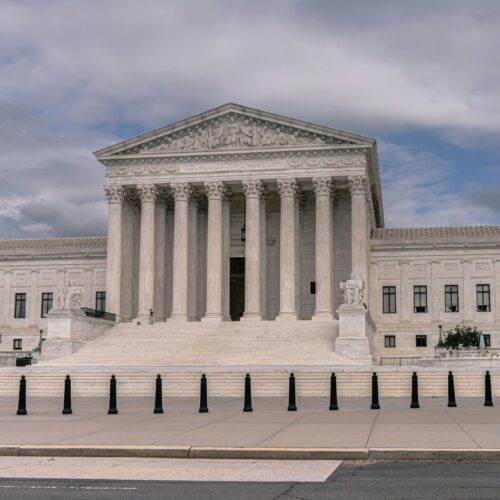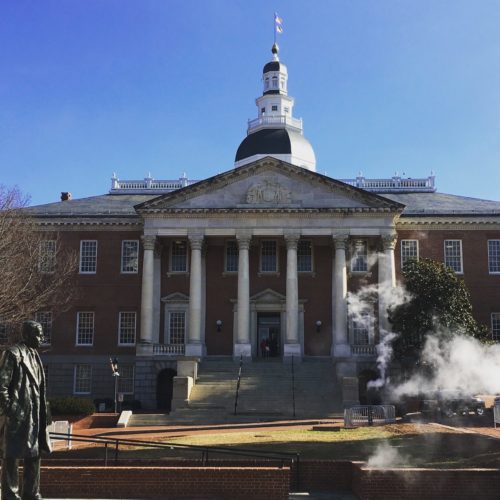CSG EAST hosts discussion on Connecticut Green Bank’s innovative Green Liberty Bonds

Graphic courtesy of the Connecticut Green Bank.
Earlier this week, CSG EAST’s Energy and Environment Committee hosted a virtual discussion with officials at the Connecticut Green Bank, to learn about the first-ever small denomination bond that is enabling citizens to invest in efforts to address climate change.
Green Liberty Bonds, offered in $1,000 denominations to individuals as well as institutional investors, are intended to fund projects that will further a number of broad societal goals as states work to decarbonize their energy systems, such as strengthening communities, promoting environmental justice and inclusivity, and advancing market transformation in green investing.
The bonds are modeled after World War II Series E Bonds, which were purchased by 80 million Americans and were used to finance the country’s military initiatives. Just as war bonds appealed to Americans’ sense of patriotism and duty to assist the nation’s war effort, Green Liberty Bonds are intended to enlist citizens in the fight to protect society against another looming threat: climate change. The bonds aim to harness the power of capitalism to invest in sustainable projects to help communities transition to a low-carbon economy.
“This is about enabling citizens to be part of the solution,” said Bryan Garcia, Connecticut Green Bank president and CEO, during the discussion on July 20. “We want to create markets that not only enable more private capital flow, but that enable citizens to be a part of that capital flow as well.”
A financing tool with broad appeal
Green bonds, which have grown dramatically in popularity in the last few years, describe a class of bond that must be used toward environmental projects. The European Investment Bank issued the first green bond in 2007; last year, some $157 billion in green bonds were issued worldwide.
The Connecticut Green Bank’s Green Liberty Bonds are a subcategory with three distinct features: the proceeds must go toward combating climate change; they have to be “retail accessible,” meaning, accessible to individuals; and they need to provide for consumer protection, through certification and verification by an independent third party who can attest that the proceeds are being used for efforts to address climate change.
Based on the results of the Green Liberty Bonds’ first sale, on July 14, the concept has broad appeal. Nearly $17 million in Green Liberty Bonds sold out in six hours, and demand exceeded supply. While the sale was small by municipal bond standards, there was strong interest among residents in Connecticut — who were given preference – as well as investors in other states, suggesting the market has room to grow. The bank is planning to issue another bond later this year, said Garcia.
The funds raised from the initial offering will be used to finance the state’s Residential Solar Investment Program. Through the program, the bank provides upfront incentives to owners of solar home installations, and in exchange, the bank retains the solar home renewable energy credits (SHRECs) from that transaction (one SHREC equals the environmental attributes of one megawatt-hour of electricity generation). It then sells those SHRECs to the state’s two investor-owned utilities through a 15-year master purchase agreement at a price the bank sets, which is intended to cover the incentive the bank pays as well as administrative costs. The Green Liberty Bonds are secured by the SHREC revenues it receives.
The utilities are required to purchase a portion of their electricity from solar generation and other renewable energy sources over time to comply with Connecticut’s Renewable Portfolio Standard, which requires that 29% of the state’s power flow from renewable sources by 2020, and 48% by 2030. Last year, Gov. Ned Lamont signed an executive order directing state agencies to recommend strategies for achieving a 100% zero carbon target for the electricity sector by 2040.
Garcia said the current bond configuration is just one example of how Green Liberty Bonds could be structured in a compliance market, and could envision the state issuing the bonds for a range of climate projects, including preserving forests and other natural and working lands – in compliance or voluntary markets — to serve as a carbon sink to meet its climate goals. Connecticut has a legislative mandate to reduce its economy-wide carbon emissions 45% below 2001 levels by 2030 and 80% by 2050.
The bonds also exemplify the creative innovation that policymakers say will be essential as governments worldwide call for a green economic recovery from the COVID-19 pandemic.
Lonnie Reed, who chairs the Connecticut Green Bank’s Board of Directors, said the bank is committed to supporting projects that focus on equity and environmental justice as the state’s economic recovery picks up. Reed emphasized the pandemic’s disproportionate impact on low-income and minority communities, due to a range of underlying health and economic challenges, including exposure to high levels of air pollution.
“There are so many battles that need to be fought. But part of how we’re going to save the economy is to really create a green economy that creates jobs, gets people excited and is transformational,” said Reed, an expert on energy issues who served five terms in the Connecticut State House, where she chaired the House Energy & Technology Committee.
Investing as a region?
While Connecticut is a pioneer in the realm of green lending – it was the first U.S. state to establish a green bank – the concept of leveraging public funds to overcome barriers to investing in critical low-carbon projects and resilient infrastructure has quickly gained support in the United States.
Garcia said the Connecticut Green Bank has been working through a consortium of state, county and local green banks – some 15 in total — to advance a national concept of green lending. The concept is contained in the $1.5 trillion green infrastructure bill passed by the U.S. House of Representatives last month, and calls for the creation of a national green bank, a “Clean Energy and Sustainability Accelerator,” which would provide capital to state and local green banks to invest in projects to reduce emissions, promote renewables, assist workers impacted by the transition to a clean-energy economy, and support the creation of green banks where they do not exist, among other provisions.
During the July 20 discussion, several CSG EAST members expressed support for a regional approach to green investments in the Northeast, which could accelerate the creation of alternative-fuel infrastructure and other critical investments that would help states meet their aggressive goals for decarbonizing electricity and transportation. Like Connecticut, nearly every northeastern state has established targets requiring a rapid shift away from polluting energy sources within the next three decades, and success will hinge on making the transition affordable for consumers and businesses, and fostering new jobs in low-carbon industries.
Such regional collaboration would send a signal to the markets that state governments are serious about private capital mobilization; and enabling citizens from the region and beyond to invest in projects through Green Liberty Bonds could be a critical driver of needed capital flows, said Garcia.
The Connecticut Green Bank is a quasi- public organization of the state of Connecticut, which was established by the Connecticut General Assembly on July 1, 2011 as a part of Public Act 11-80. The bank receives public resources, including funds from the state’s Clean Energy Fund and allowance proceeds from the Regional Greenhouse Gas Initiative, which it uses to leverage private investment. Last year, the bank enabled some $320 million in private investment on top of $30 million in public resources.
“I can tell you that seems like a lot, but we know that the United Nations tells us we need to be an order of magnitude more” to avoid the worst impacts of climate change, said Garcia. For example, the UN projects a financing gap of $2.5 – 3 trillion annually to achieve its Sustainable Development Goals by 2030. The goals, which were approved by all UN member states in 2015, seek to end poverty, protect the environment, and ensure peace and prosperity for the global community by 2030.
“So our new Comprehensive Plan is: How can we enable more capital sources so that we can deliver more impact?” said Garcia. “And the Green Liberty Bonds is a component of that.”
You can listen to a recording of the conversation here.





